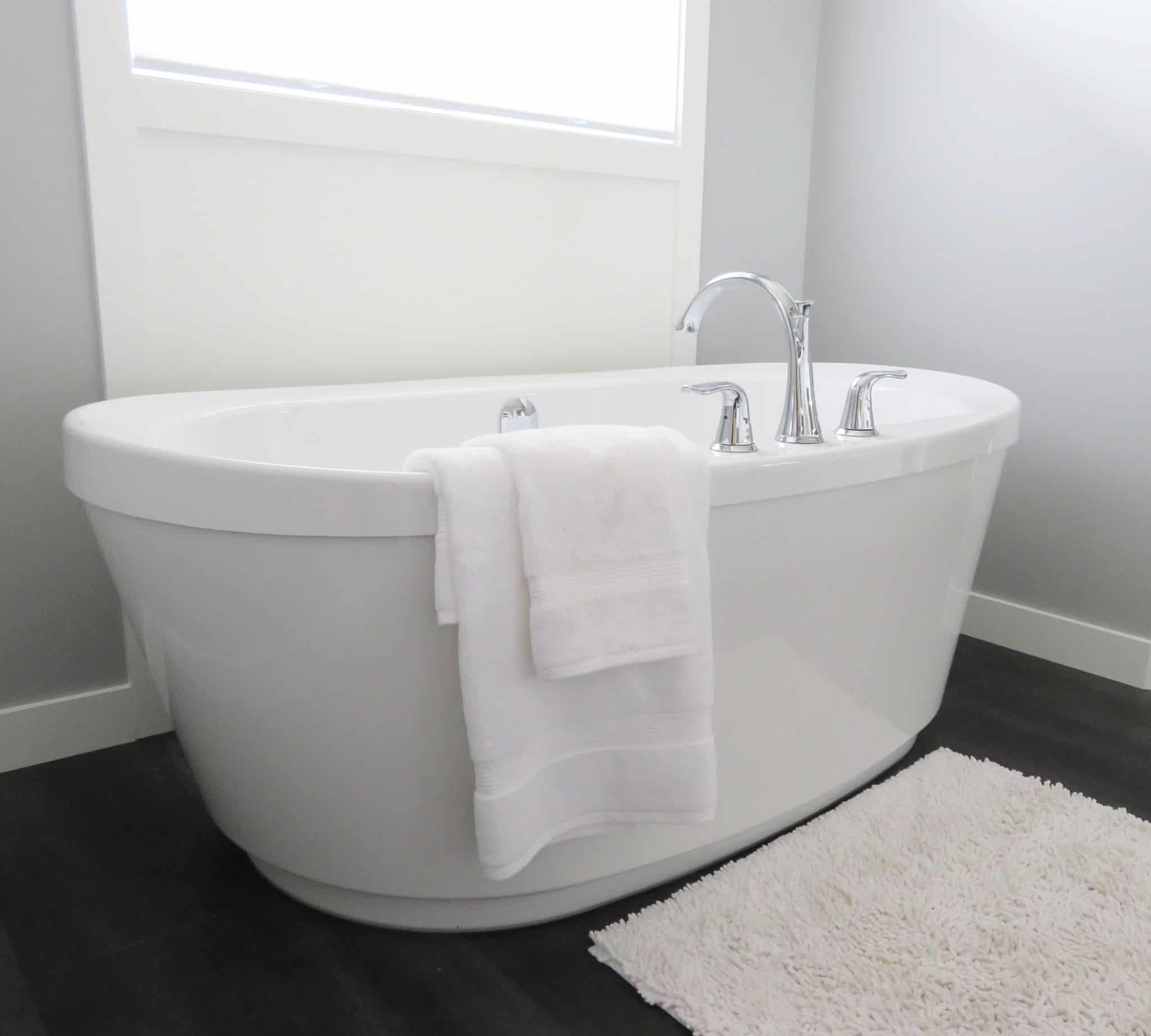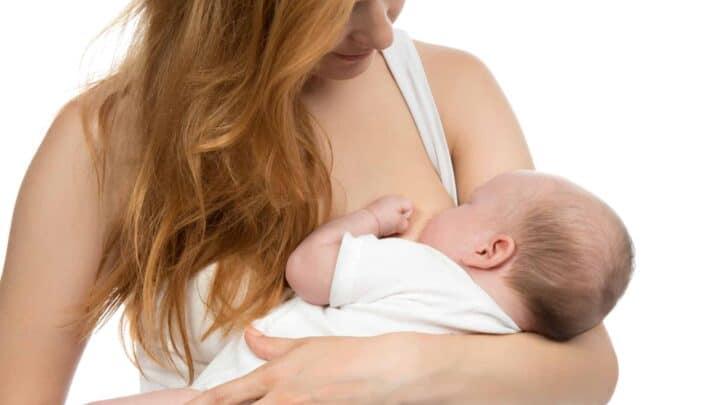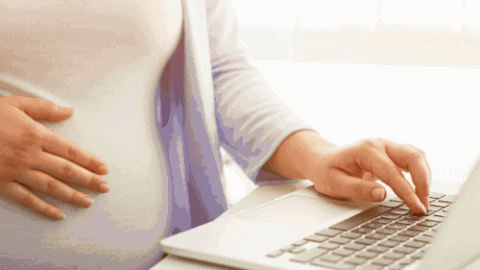
Labor and Delivery nurse
As a mom of five kids and having had been through the recovery process a few times, I have put together a few things that helped me in the recovery post-childbirth.
Below is my ultimate guide to recovering after vaginal birth.
Some of the points may seem obvious but if you’re anything like me and lose any ability of rational thinking after having a baby it is a good resource to have on hand.
The weeks that follow childbirth are sometimes referred to as the fourth trimester.
It is just as important to take care of yourself in the fourth trimester as it was the three that came before.
I have also added a few things that aren’t normal and when you should contact your doctor or OBGYN for advice.

As an Amazon Associate I earn from qualifying purchases. The links below may be affiliate links. Please read my disclosure policy for more information.
Rest
Sounds obvious right?!
This is especially important with subsequent children, I have to constantly remind myself to have a lie-down or sit down all the time.
I am a doer and I need to get things done but this is one of the times that the dishes can wait.
I know its annoying when people tell you to sleep when the baby sleeps but it really is very good advice.
Even if you don’t sleep its worth just laying down and closing your eyes.
Rope in those favors and ask for help.
Ask nan and grandma to bring over some dinner and just spend an hour holding the baby so you can have a nap.
If you’re doing too much then you will see an increase in vaginal bleeding, so if that happens it’s your body’s way of telling you to slow down!
RELATED: Postpartum Essentials
Sitz Bath

The word Sitz is taken from the German word ‘sitzen’ which means to sit.
A Sitz bath is a bath where you immerse your bottom and hips in water.
It is commonly used to relieve discomfort caused by episiotomies, hemorrhoids, uterine cramps and anal fissures.
It is also used for bladder, urine and vaginal infections.
You can use your bath to have a Sitz bath or buy a plastic bowl that fits into your toilet.
For a Sitz bath, you only need a few inches of water.
Do not add soap or shower gels as they are highly perfumed and could cause irritation to an already sensitive area.
Maxi Pads
In the first week, bleeding is at its heaviest I use an adult diaper, the maternity pads sold in the shops just don’t cut it during the first 7 days postpartum.
The beauty of the diaper is it won’t move and catches drips from any angle.
This include incontinence accidents caused by not being able to get to the toilet quick enough!
After the initial heavy flow that lasts around a week, you can change over to maxi pads
I use the ones with the wings that help catch any leaks.
As you get into the third week a normal pad would be sufficient for the day and a night time pad for overnight.
Ice Packs
After a vaginal delivery, most of us will be suffering from bruises and swelling.
A natural and simple yet effective remedy for relief is the use of an ice pack.
After my second baby was born the nurse gave me a strange looking maxi pad shaped ice pack to pop inside my underwear.
They were amazing! I would use them every so often to help reduce the inflammation.
My doctor recommended I cover them with a soft cotton cloth and icing for 10-15 minutes every hour.

You could also try a Padsicle for extra relief
Use medicated witch hazel for hemorrhoids
Hemorrhoids (also known as piles) is a painful swelling of a vein in the rectum.
Many women experience hemorrhoids in pregnancy or postpartum due to internal pressure, a large rush of hormones, constipation and pushing during delivery.
Symptoms include bleeding after a bowel movement, rectal pain, itching and being swollen around the anus.
Witch hazel is a natural anti-inflammatory which can help relieve itching and pain which are the two main symptoms of hemorrhoids.
Due to its anti-inflammatory properties, it can also alleviate and reduce swelling.
Witch hazel is also known to be an astringent from deciduous trees which helps contract the tissue to reduce bleeding.
Using witch hazel on a maternity pad could really help alleviate some of the conditions associated with hemorrhoids, coupled with childbirth it really can be painful and uncomfortable.
You could also try keeping the witch hazel in the refrigerator and putting it on cotton balls and applying it to the affected area.
Related: THE BEST ONLINE BIRTHING CLASSES COMPARED
Applying Heat for After Pains
The cramps you get post-childbirth are known as after pains.
These are simply contractions of your uterus to get back to its pre-pregnancy size also known involution.
When a baby is breastfed Oxytocin is released, this helps your uterus contract quicker.
Normally you don’t feel them after your 1st baby. I, however, found with my subsequent children the pains got worse with the afterpains.
After my fifth baby, they felt exactly like contractions and the pain in my uterus would be excruciating.
Luckily for me, it does subside with the more I breastfeed.
I used a hot water bottle to alleviate the pain much in the same way you would with menstrual cramps.
You can also use a hot microwavable beanbag or a heat patch on my back.
I found much like labor the pain would be in my uterus and in the small of my back.
Disposable Underwear
Disposable panties are lightweight briefs that are only used once and then thrown away.
Disposable undies are a must-have after birth helping to keep your maternity pad in place and not having to worry about ruining your underwear.
Disposable undies are great for the first 7-10 days when bleeding is at its heaviest.
I remember with my first child there wasn’t much on the market and when I tried the disposable ones.
I felt like I was wearing a big loose flapping piece of mesh on my bottom that would no way be able to hold a pad in place.
it made me feel so uncomfortable that I just used normal panties which I had to toss once the bleeding had stopped.
Recently there is so much choice on the market.
You can buy disposable panties that are like shorts or ones that are full briefs, it all depends on your personal preference.
The disposable underwear that is now available are strong, hygienic and have added support.
They now have elastic around the waist and legs ensuring a comfortable and secure fit.

Tips for those suffering from constipation
Lots of factors can contribute to why you are suffering from constipation after childbirth.
Your stomach has stretched during childbirth and those same muscles are the ones needed to actually poop.
Your bowel may also have endured the same fate and may take a little while to get back to how it functioned previously.
After childbirth, your poor bum has been through an ordeal and many moms have a fear of pooping for the first time and this fear can actually lead to constipation.
Keep hydrated by drinking lots of water.
You need to not only replace all the fluid lost during labor but also need it to soften your stool.
Try and eat lots of whole grains, green veg and fresh fruit. Even a fibre supplement could help here.
If you feel you are constipated then use a stool softener such as prunes, milk of magnesia and aloe Vera juice these natural remedies can prevent bad from worse.
If none of the above work then contact your doctor who can prescribe something medicated to ease your symptoms.
Light exercise, taking an easy stroll and just moving may be enough to get things going but please don’t overdo it.
Try and do your Kegel exercises as much as you can even if you can’t feel it just keep at it.
Try not to strain, let nature do its thing and don’t push too hard as it could lead to or aggravate hemorrhoids.
Keeping Stitches Clean
Most women have stitches after giving birth.
You would have been told to keep them clean at the hospital to reduce the risk of infection.
Use a jug of warm water and pour over yourself when you wee, this will take away any stinging and provide soothing relief.
Pat yourself dry with a paper towel and refrain from rubbing or wiping the area.
When to see your doctor about stitches:
*your stitches suddenly become painful
*They have become smelly, more than your normal vaginal odor
*you have swelling in the area
Unfortunately, I needed an episiotomy with my first and a large tear with my second son meant I needed stitches.
They are painful and you must take care of yourself by cleaning with water and patting yourself dry.
You may also feel a great deal of pressure down there when you sit so may need to use a cushion for a few weeks until you are comfortable to sit without one.
Keep your doctors’ appointments
Between 6 and 8 weeks the doctor will send you an appointment for a post-natal check-up.
The baby will also be sent an appointment but that usually takes place on another day.
If this had been your first delivery you have probably experienced lots of firsts and also pains in places you didn’t feel were even possible,
I would recommend writing down any questions or concerns in a notebook before the appointment as if you are anything like me you will forget and the questions will come flooding back to you as soon as you walk out of the doctor’s office!
Doctors will take this opportunity to ask lots of questions about how your pregnancy and delivery went.
They will ask how you are feeding baby check your breasts for any clogged ducts and make sure there is no infection.
The doctor will also take a look at your abdomen just to check its returning nicely to pre-pregnancy size and that the cervix is closed.
If you have had a tear or an episiotomy the doctor will make sure it has healed nicely.
The doctor will also ask if you are still bleeding and if you are, they will make sure that it isn’t coupled with fever which could be a sign of infection.
Speak to your doctor if you are still passing large clots or having heavy bleeding.
The doctor will check your weight and blood pressure and send you for any tests she may feel are necessary.
Especially in the event of a large blood loss during delivery or anemia during pregnancy.
Your doctor will want to discuss contraception with you and the options that you have depends on how you are feeding your baby and what will suit your lifestyle.
Contrary to popular belief you can get pregnant straight away even if you are exclusively breastfeeding.
So if you’re not planning on having another baby straight away speak to the doctor about this.
Your doctor will also want to speak to you about your mood, and it is vital you talk about any feelings of sadness and depression with them.
The doctor will screen you for postpartum depression as a standard procedure.
They will ask you about the support you have, mood and even domestic violence.
You May Also Like:
Limit Visitors

After my first labor which was a grueling 24 hours with my baby.
I was in the hospital for a few days as he was my first and everyone who came said they would come again as the hospital had a strict no children policy.
Fast forward to the day I came home with baby.
Instead of being in bed breastfeeding my new baby he was being passed around and I was feeling immense pressure to bottle-feed him so I could attend to my guests.
Taking care of them instead of myself.
I was exhausted and I promised myself that in the future I would limit visitors so that I could rest.
How I handled guests:
I decided how many guests I would have if I wanted any at all.
We would ask guests to bring food, they would agree or rearrange for another time!
I had my husband become my Personal Assistant and answer all my calls.
Don’t play the hostess like I felt I had to; no one is expecting you to make tea in fact my visitors would make it for themselves and me.
After my recent birth I was handed some daily injections I needed so I used this as an excuse to get rid of any visitors that were getting too comfortable.
My husband would exclaim ‘its time for your shot’ this usually did the trick, nobody really wants to hang around seeing me being injected into my butt!
Ask for help with meals
When people ask you if you need help take them up on it, ask if they wouldn’t mind bringing some food over.
I always batch cooked in my last trimester however that food never lasts long when you have your partner at home and also a ravenous appetite bought on by breastfeeding.
I used to ask my sisters and mom just to pack me an extra something of what they had cooked that week.
Before I knew it, I had 2 weeks’ worth of food stocked up in my freezer.
Natural ways to reduce postpartum swelling
Postpartum swelling or edema is usually caused by an excess of fluid remaining in body tissue after childbirth.
The main symptoms of edema are: swollen extremities usually the hands, feet and ankles and weight gain.
The water will gradually be released through sweating and urinating. Some research suggests that a woman can retain up to 6.6lbs of fluid throughout the body!
Most women will experience some degree of swelling and mild edema is extremely common.
I didn’t experience any swelling with my first 2 children but oh my gosh with my third my feet looked 3 times the size and as I have tiny size 3 feet it was a real shock.
I read up and used some natural methods to reduce the swelling and was armed with all the information and tips before I gave birth to baby no 4 and 5.
Try not to stand for too long: take regular breaks and sit down as often as you can.
When you lay down try and elevate your feet on a few cushions to the level of your heart this will encourage water to flow through the body and improve circulation.
Avoid sitting with your legs crossed this will restrict blood flow to your legs and can make the edema worse.
Drink more water: it may sound odd but actually keeping hydrated will help the body lose the water weight as being dehydrated forces the body to hold on to extra water.
Water will also help push toxins out through the kidneys helping the body stay healthy and speed up your recovery.
Compression stockings: these encourage the blood to flow by reducing the size of the blood vessels in the feet, legs and ankles.
The theory being that the smaller vessels will move around quicker shortening the time it takes to circulate leading to a faster recovery.
This study in 2017 https://www.liebertpub.com/doi/full/10.1089/lrb.2016.0038 showed that wearing compression stockings helped reduce swelling in the 24 hours after childbirth

Go for a postpartum massage: a massage will help circulation and encourage the loss of excess water.
It will also help stress and just help you feel more relaxed.
Eating well: a healthy diet especially one with potassium-rich food, and reduce salt intake to help the balance of sodium and potassium in your system.
Eating more potassium-rich foods such as: bananas, avocados, spinach, lentils, yogurt and peanut butter will naturally lower sodium.
See your doctor If:
+ you notice that swelling comes on suddenly,
+have a headache, vomiting, blurred vision and light sensitivity,
+ pain, irritation redness and swelling in one leg.
+pressing on a swollen area leaves a dent in the skin known as pitted edema.
Don’t try and lose baby weight too quickly

I know it’s tough watching celebrity mums back in their skinny jeans within 6 weeks of giving birth but that is not healthy.
When you look at them just remember what actually goes into the weight loss and I assure you a lot of it wouldn’t be recommended by a doctor.
A full-time chef, a personal trainer and a lucrative DVD offer, not to mention fad diets.
It would be better to do things slowly.
I have managed to lose all the baby weight and I am back to my pre-children weight but it’s taken me a year to reach this point. Slowly but surely does indeed win the race.
Focus on yourself and what works for you. Here are some tips on what worked for me:
1.Not comparing myself to anyone and losing weight for me not anyone else
2.Eating 3 healthy meals a day and not skipping meals. I also made sure I sat down and ate properly and stopped my awful habit of nibbling.
3.I began packing food for myself as well as baby, this stopped me eating junk when we were out
4.Taking a daily stroll while the baby was having a nap in the buggy
5. Having a 2-liter water bottle that I had to finish by lunch and then another one before bedtime.
6. I stopped skipping meals. I thought this would help but it caused me to binge eat the wrong foods like a packet of biscuits which obviously weren’t going to help in my weight loss journey.
Remember to get the thumbs up from your doctor before working out or starting a diet
Wear a supportive bra
During pregnancy and breastfeeding most moms will go up four cup sizes and two under band size.
This change in size highlights why it is paramount to get the right bra.
Not only are they comfortable they are adjustable, but they also offer more support in the cup sizes, deeper center and wide straps.
Maternity bras are made of primarily cotton which is breathable which is important when you have your own internal heating system.
They also have brushed back elastics that are softer against your skin.
It is essential that you wear a supportive bra after giving birth.
Your breasts are at their heaviest due to pregnancy and nursing and need the support to prevent backache and can even reduce stretch marks.
Nursing bras come in all different designs not the old-fashioned designs they once were.
You can also get them in all different fabrics and non-allergenic for those with sensitive skin.
If sadness lasts more than 14 days contact your doctor.
Many women feel sad after giving birth ranging from mild baby blues to full-blown postnatal depression.
The baby blues can make you feel overwhelmed, anxious, moody, weepy and tired which usually subside after a few days post-baby.
If, however, these feelings last for longer than 2 weeks then you may have post-natal depression (PND) and you must go and see your doctor as these feelings won’t go away without treatment.
The most common feelings of PND are:
Feeling anxious about things that normally wouldn’t bother you.
Feeling like a hopeless mom.
Constant negative thoughts and feelings
Obsessive thoughts about your baby e.g., not gaining weight or breathing.
Feeling fearful that you may hurt your baby.
Feelings of hostility towards your baby, other children or your partner.
Guilty feelings of not being able to cope.
Irritable, tearful and lacking in confidence.
Panic attacks that cause a rapid heartbeat, sweating, sickness or fainting.
PND affects everyone differently but if you have any of the above symptoms please see your doctor. The first step is recognizing that you have PND and getting the right treatment
Sore breasts and nipples
In the days post birth, it is inevitable that you will suffer from soreness, tenderness and cracking nipples.
To ease discomfort apart from feeding the baby you may try the following:
- Wear a well-fitting bra that doesn’t restrict your breasts
- Cabbage leaves are known for their health benefits after feeding and expressing to reduce inflammation and pain.
- Take some painkillers that are safe whilst breastfeeding to ease the pain.
- If you have leaky breasts, apply warm flannels beforehand expressing
Mastitis is inflammation of the breast tissue that sometimes can lead to an infection if you have any of the following symptoms go and see your doctor as it may need treating with antibiotics:
A hot and tender breast
A patch of red skin that’s painful to touch.
Flu-like symptoms
A high fever
Feeling tearful, achy and tired
While cabbage leaves can help with engorgement and are soothing, it also can reduce/dry breast milk.
I would caution women that are trying to establish a supply or that have low supply to use other methods for relief.
Cabbage leaves should only be used for a few minutes at a time to avoid affecting supply.
Vaginal bleeding
Vaginal bleeding and discharge after birth is known as Lochia. it is your body’s way of getting rid of all the extra blood and tissue in your uterus that helped your baby grow during your pregnancy. Heavy bleeding is common during the first few days after delivery and should slowly subside in the next few weeks. From red to pink, to brown and finally a yellowish color. Normally the bleeding should last between 4 and 6 weeks.
What’s not normal are the following and you must contact your doctor if you have any of the following symptoms:
Bleeding bright red blood after day 3
Large blood clots larger than a plum.
Bleeding that fills more then one sanitary towel an hour and shows no indication of slowing or stopping.
Blurred vision
Fever and chills
Weakness
Nausea
Dizziness and feeling faint
A rapid heartbeat.
Eat healthy nutritious meals
You are what you eat, and eating a healthy and nutritious diet will aid your recovery. Maintaining a balanced blood sugar level is vital post-baby as it was beforehand especially if you have been suffering from gestational diabetes. Your body needs the right nutrition to produce milk for your new born, balance your hormones and just to heal.
Dark green leafy greens are a great way to get lots of nutrients in, you can have these as part of a salad, a smoothie, soup or in a stew. Protein is just as vital chicken, eggs and tofu will also help you recover quicker.
I swear by a bowl of bone broth with vegetables to help me recover and to give me lots of energy. I have had this after each one of my children.
Take time to nourish yourself as well as nourishing your baby, I assure you that you will need lots of energy for those sleepless nights!
If you have had a C-Section you can read about Recovery Tips here





